Views: 370
 The entrance to the courtyard in which the Judenrat (Jewish Council) was located during WWII in the Large Jewish Ghetto in Vilnius
The entrance to the courtyard in which the Judenrat (Jewish Council) was located during WWII in the Large Jewish Ghetto in Vilnius
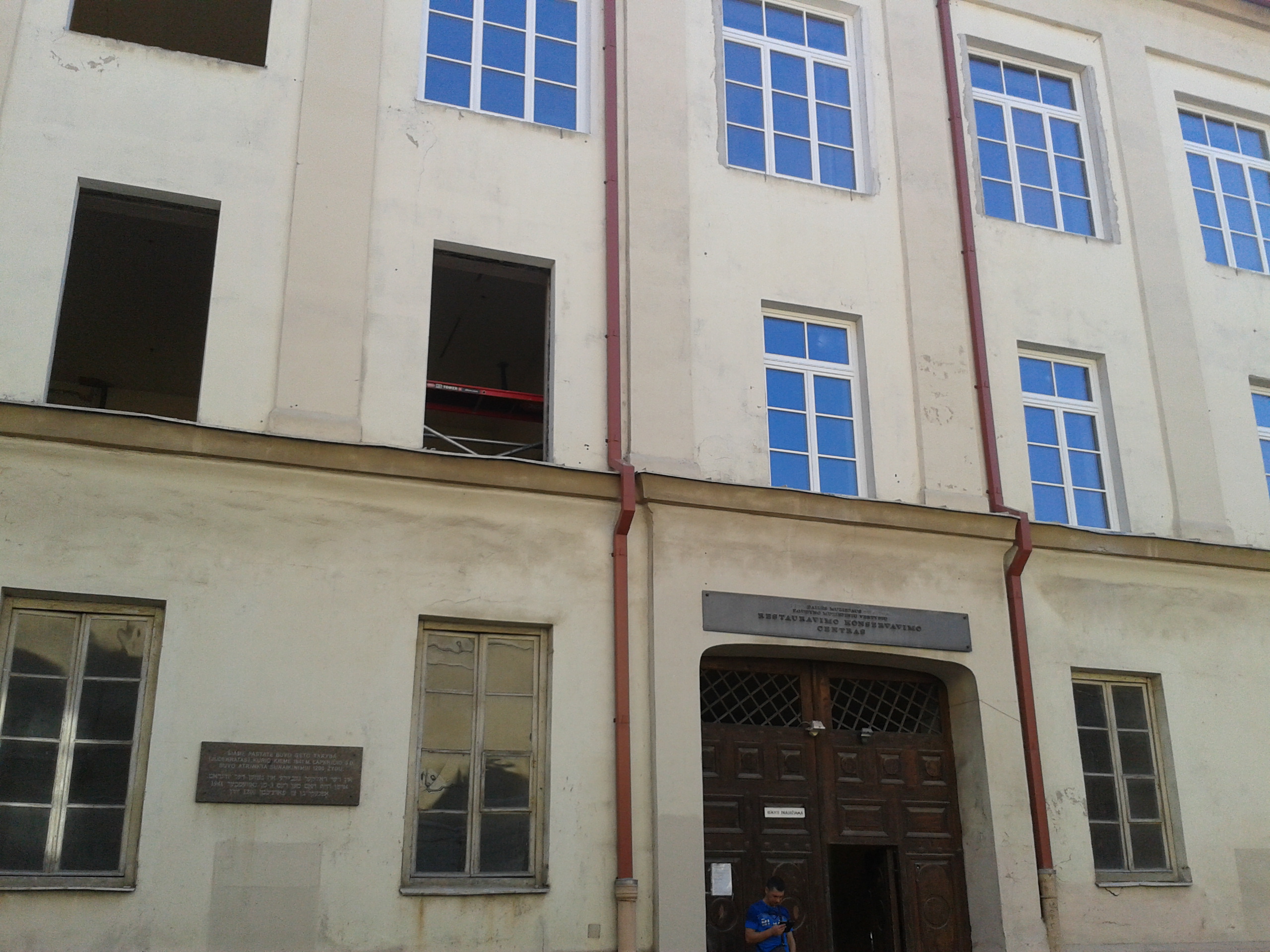 The building of the Judenrat which functioned from September 1941 to September 1943 within the Large Jewish Ghetto that was formed around Rūdninkų Square
The building of the Judenrat which functioned from September 1941 to September 1943 within the Large Jewish Ghetto that was formed around Rūdninkų Square
 Hebrew inscription above the windows on a former Jewish shop
Hebrew inscription above the windows on a former Jewish shop
All photos are copyrighted by Vladislav B. Sotirovic
© Vladislav B. Sotirovic 2019
RELATED POSTS
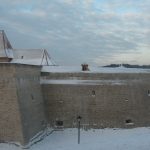
The Bastion is comprised of a tower, cannon room and 48 m. the long corridor connecting it with the towerThe walls and moats of the Bastion were excavated in 1965-1970, and the canon room was renovated in 1985-1986 The entire Bastion is converted into a museum, and since 1987 it houses an exhibition of defensive fortifications and weaponryAll photos are copyrighted by Vladislav B. Sotirovic© Vladislav B. Sotirovic 2019
Continue Reading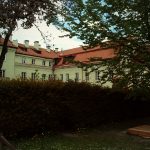
A small doorway in a plain building at Pilies (Castle) Street leads through a vaulted passage into a large yard. The yard was the original place of the Botanical Garden of the Vilnius University. It was founded by a French botanist, Jean Gilibert, in 1782The Botanical Garden remained in this yard for 10 years when it was transferred to Sereikiškių Park, and as well as provided accommodation for the university professors. Before becoming the Botanic Garden, the buildings around had been a college for noblemen. After the university was closed in the mid-19th century, the buildings were used by the Medical AcademyThe yard is the best and most probably the single place in Vilnius from where to admire the spectacularly decorated top of the apse of the Church of St. John's (the church in the grand courtyard of the University of Vilnius)All photos are copyrighted by Vladislav B. Sotirovic© Vladislav ...
Continue Reading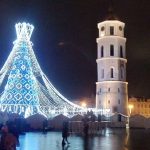
Christmas Tree decoration at the Cathedral Basilica Square in Vilnius. The belfry is seen in the backgroundChristmas decoration in front of the principal building of the castle complex in Vilnius Old Town - Cathedral BasilicaCathedral Basilica of Vilnius is erected on the place of the pagan altar with a ceasred fire to the pagan god Perkūnas (god of Thunder)All photos are copyrighted by Vladislav B. Sotirovic© Vladislav B. Sotirovic 2019
Continue Reading
Wonderful panoramic view can be seen from the roof (platform) of Gediminas Tower (Upper Castle Tower)Despite wars and destructions, the architectural ensemble of Vilnius Old Town remains unique. Baroque domes and towers of Vilnius Old Town coexist with an irregular medieval city plan Vilnius Old Town is lacking German or Scandinavian features, rather reminiscent of Prague or Rome, Vilnius differs greatly from the other Baltic capitalsAll photos are copyrighted by Vladislav B. Sotirovic© Vladislav B. Sotirovic 2019
Continue Reading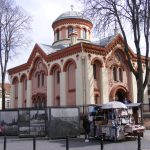
The Russian Orthodox Church of St. Parasceve (or Piatnickaya Church) is located in the centre of Vilnius' Old Town where a Russian Orthodox Church stood since the times of the Lithuanian Grand Duke Algirdas in the mid-14th centurySt. Parasceve Russian Orthodox Church is the oldest surviving Russian Orthodox Church in Lithuania located in the former Russian quarter of the Old TownThe church was reconstructed in the mid-19th century by the famous Russian architect N. ChaginAll photos are copyrighted by Vladislav B. Sotirovic© Vladislav B. Sotirovic 2021
Continue Reading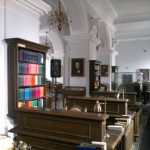
The architect whose name is most closely associated with Vilnius University is the Jesuit Tomas Zhebrauskas who founded (together with Elžbieta Oginskaitė-Puzinienė, the daughter of the famous manor owner Mykolas Oginskis) and designed the observatory, in 1753. The White Hall belongs to the observatory The astronomical observatory of Vilnius University is one of the oldest in Europe and the oldest in the former Polish-Lithuanian Commonwealth. It was famous in Europe for its astronomers and their works until it was closed after the fire of 1876The White Hall today is, in fact, a reading room of the Library of Vilnius UniversityAll photos are copyrighted by Vladislav B. Sotirovic© Vladislav B. Sotirovic 2023
Continue Reading
The Town Hall hosted a court, archive, weapons depository, as well as a prison for artisans that had broken the law. Burgomasters also held meetings in the Town Hall, as did the Council of Merchants Since 1991, Vilnius Old Town Hall once again is functioning as a place for holding important events like art exhibitions, concerts, conferences, meetings, etcIn the Middle Ages, the Town Hall Square was a place where physical punishment was carried out. There were gallows and a scaffold nearby, where executions were carried outAll photos are copyrighted by Vladislav B. Sotirovic© Vladislav B. Sotirovic 2019
Continue Reading
Trakų St. finishes where it meets Pylimo St, which runs along the course of the old city wall. There used to be a gate here, which was pulled down together with the wall at the very beginning of the 19th century. In the niche of the Umiastowski estate (Trakų St. 2) there is a Statue of "The City Guard" (1973) In Trakų Street, there is the Church of Our Lady of the Assumption that was founded here by the noble Goštautas family in 1387, the same year as Lithuania became converted to Christianity. However, it is believed that the church with the monastery existed even earlierOne of courtyards of the buildings in Trakų StreetAll photos are copyrighted by Vladislav B. Sotirovic© Vladislav B. Sotirovic 2020
Continue Reading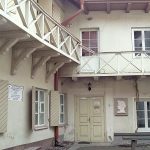
In this house, belonging at the time to a university professor, Adam Mickiewicz stayed for a short period in 1822 and completed the poem "Gražina"It is small museum of three rooms but it is currently being expended. Among the exhibits are several portraits of Adam Mickiewicz and some period furniture, including a table and chair from Kaunas and a chair from Paris that the poet himself usedThe exhibition includes among the many volumes of his work in foreign languages, for instance, a Persian translation of his "Sonnets from the Crimea" All photos are copyrighted by Vladislav B. Sotirovic© Vladislav B. Sotirovic 2020
Continue Reading
The church is inconspicuous from the street, as its façade does not face the streetThe 51 meter-tall dome can be seen from seven Old Town streetsThe Dominican Church of the Holy Spirit is one of the most magnificent churches in Vilnius. It is an excellent monument of high and late Baroque All photos are copyrighted by Vladislav B. Sotirovic© Vladislav B. Sotirovic 2018
Continue Reading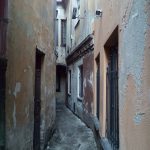
The entrance to the Knight Street in Vilnius Old TownA courtyard after the end of the Knight StreetThe end of the Knight Street (followed by the courtyard)All photos are copyrighted by Vladislav B. Sotirovic© Vladislav B. Sotirovic 2021
Continue Reading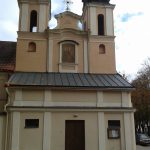
According to legend, the monastery and wooden church were built circa 1332 in the burial spot of the Franciscan monks that had been martyred by Lithuanian pagansThe building complex is formed in the mid-18th century. Today, the church possess six Late Baroque-style altars, with the main altar having a picture of the Holy Virgin Mary that is considered to be miraculous. A copy of the picture is painted on the façade in 1742 The monument to famous Lithuanian neo-Classicist architect Laurinas Gucevičius, the founder of Vilnius neo-Classicism, is erected in 1994 in the square in front of the church. All photos are copyrighted by Vladislav B. Sotirovic© Vladislav B. Sotirovic 2020
Continue Reading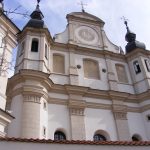
The church was financed by Grand Chancellor of the Grand Duchy of Lithuania, Grand Hetman, and Vilnius Voivode - Lew Sapieha, who had converted to Roman Catholicism from Calvinism. He was one of the most influential nobles in the Grand Duchy of LithuaniaLew Sapieha gave the church and surrounding buildings for the Bernardine nuns to have a convent and built a Sapieha family mausoleum in the churchThe convent was also a place where the daughters of rich aristocrats were taught. Today, the Church Heritage Museum operates in the churchAll photos are copyrighted by Vladislav B. Sotirovic© Vladislav B. Sotirovic 2019
Continue Reading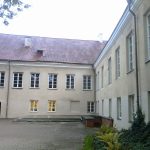
Earlier in this courtyard was an artillery school. The Rector of the Vilnius University S. Malewski as well as lived in the building of this courtyardA poet Adam Mickiewicz spent much time with his son in their house in 1818-1819. As the first-year student, he lived in one of those buildings. Later, it became a gathering place of the PhilomatsThe courtyard is surrounded by two-storey buildings. A Gothic façade of one of them is facing Pilies StreetAll photos are copyrighted by Vladislav B. Sotirovic© Vladislav B. Sotirovic 2023
Continue Reading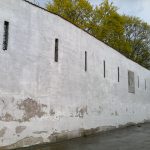
It was not until 1503 when Grand Duke of Lithuania and King of Poland Alexander Jagiellon granted a privilege that the construction of the wall began. The year 1522 is considered to mark the end of the construction, when Grand Duke of Lithuania Sigismund the Old exempted the residents of Vilnius from the duty of keeping guard at the castle and ordered 24 guards to be posted at the city gatesThe length of the defensive wall was 2,5 kilometres having 10 gates. The wall surrounded the territory of today's Old Town, approximatelly 100 hectars. The foundation of the defensive wall was built of stone, and bricks were mainly used at the level of loopholes and higher. The was was adapted for defence with gunpoweder-operated firearms Until the late-18th century, the Vilnius defensive wall was frequently renovated. The wall served for the last time in 1794 during the uprising led by ...
Continue Reading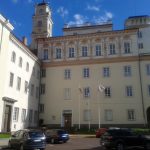
The north wing of the Library Courtyard with the building of the Faculty of History of the Vilnius UniversityThe entrance to the Central Library of the Vilnius University is decorated by the memorial door in 2001 for the 450 year anniversary of the first book printed in the Lithuanian language (1547)The main building with the main entrance to the Vilnius University with the Rector Office seen from the Library CourtyardAll photos are copyrighted by Vladislav B. Sotirovic© Vladislav B. Sotirovic 2020
Continue Reading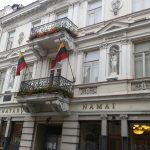
A museum operates today in the House of Signatories, along with a memorial hall where the act of Lithuania's independence was signed on February 16th, 1918 when Lithuania was under the German occupation and administration during WWI (1915-1918)The first floor of the house with statues symbolizing agriculture and fishing is very decorative. Niches on the second floor hold two male bustsHaving acquired this house in the late 19th century, Karol Sztral reconstructed it according to architect Aleksei Polozov's project in the style of HistoricismAll photos are copyrighted by Vladislav B. Sotirovic© Vladislav B. Sotirovic 2019
Continue Reading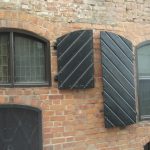
End of Stiklų St. on the intersection with Dominikonų St. and Šv. Ignoto St. in the Old Town in VilniusIn Stiklų St. No. 4 stands a typical building with a so-called Courtyard of the Printing House. Its history goes back to the 15th century. In the 16th century it held the Mamonichi printing house. A Gothic building in the courtyard with the exterior and fragments of the interior was reconstructed in 1974. In front of it a sculpture of "The Chronicler" is erected in 1973Wall (right) of the former Russian Orthodox church in Stiklų St. No. 17All photos are copyrighted by Vladislav B. Sotirovic© Vladislav B. Sotirovic 2020
Continue Reading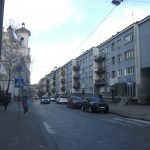
The Górecki estate in Dominikonų St. 15 is a two-storey Gothic house. It was built on this site in the late 15th or early 16th century. In 1649 it was bought by Vilnius UniversityZawisha estate is known since late 16th or early 17th century. It was renovated in the late 18th century. The façade is strictly symmetrical, done in the style of early Classicism. Renaissance vaults have survivedDominikonų Street is dominated by the Roman Catholic Church of the Holy Spirit and the Dominican Monastery (1501)All photos are copyrighted by Vladislav B. Sotirovic© Vladislav B. Sotirovic 2020
Continue Reading
Cathedral Basilica of St. Stanislaus and St. Vladislaus in Vilnius. Today the Cathedral Basilica is in the Classicist style as it was redisigned in 1783-1801 by Lithuanian architect Laurynas Gucevičius Baroque-style Cathedral's St. Casimir's Chapel built in 1610-1632 for holding the remains of St. Casimir (declared in 1604 by Pope Clemens VIII as the saint Cathedral Basilica Bell Tower. It is rebuilt tower that was part of the defensive wall that encircled the Lower CastleSaveAll photos are copyrighted by Vladislav B. Sotirovic© Vladislav B. Sotirovic 2018
Continue ReadingThe Bastion of the Vilnius Defensive Wall (I)
Courtyard of the Medical Collegium (2)
Vilnius Christmas Tree
Vilnius Old Town Panoramic View
The Church of St. Parasceve
The White Hall of the Old Campus of Vilnius University
Vilnius Old Town Hall
Trakų Street in Vilnius
The Adam Mickiewicz Museum
Church of the Holy Spirit & Former Dominican Monastery (Exterior)
The Knight Street in Vilnius
Church of the Holy Cross & former Hospitaller Monastery
Church of St. Michael the Archangel
Adam Mickiewicz Courtyard of the Vilnius University
The Defensive Wall of Vilnius
The Library Courtyard of the Vilnius University
The House of Signatories (Karol Sztral’s House)
Stiklų St. in the Old Town in Vilnius
Dominikonų Street in Vilnius
Cathedral Basilica of St. Stanislaus and St. Vladislaus



